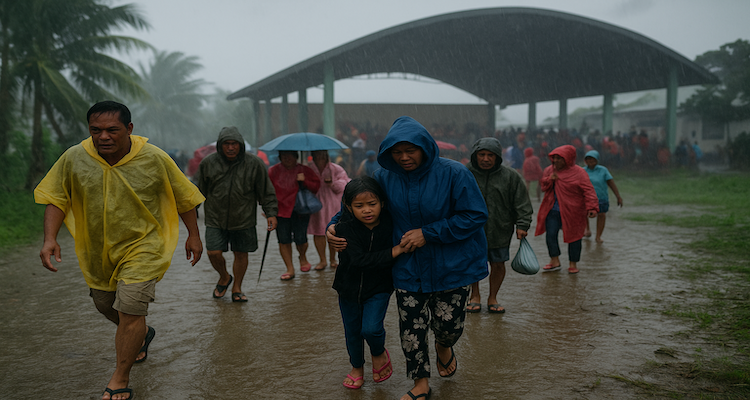U.S. Airlines Brace for Turbulence as Shutdown Grounds Flights
As the U.S. government shutdown deepens, Transportation Secretary Sean Duffy warns airlines may face up to 20% flight cuts, disrupting travel nationwide.
✈️ A Nation on Pause: Flight Disruptions Worsen Amid Shutdown
Air travelers across the United States faced mounting chaos on Friday as Transportation Secretary Sean Duffy warned he might force airlines to cut up to 20% of scheduled flights if the ongoing government shutdown persists. The crisis already straining the aviation system is pushing airlines to make unprecedented adjustments to keep operations afloat.
The Federal Aviation Administration (FAA) ordered a 4% reduction in flights at 40 major airports on Friday, a figure expected to climb to 10% by November 14, deepening the strain on an already overburdened system.
️ Shutdown Fallout Hits Air Traffic Control
The ripple effects of the record-breaking 38-day government shutdown are being felt most acutely by the country’s air traffic controllers. Roughly 13,000 controllers and 50,000 TSA screeners are continuing to work without pay, a situation that has led to a surge in absences and operational stress.
On Friday, staff shortages triggered hundreds of flight delays at major hubs, including Atlanta, San Francisco, Houston, Phoenix, Washington, D.C., and Newark. By 7:30 p.m. ET, more than 5,300 flights were delayed, according to FlightAware. At Reagan National Airport, average delays hit four hours, with nearly 40% of flights delayed and 17% canceled.
Many controllers were informed they would receive no pay for a second consecutive pay period, exacerbating the strain on workers and travel networks alike.
⚖️ Political Standoff Raises the Stakes
The shutdown driven by a deadlock between the White House and congressional Democrats has become a political showdown over federal funding and health insurance subsidies. The administration, led by President Trump, has used the specter of widespread air travel chaos to pressure lawmakers to accept its proposed spending plan.
Democrats, however, argue that Republicans are responsible for the impasse by refusing to negotiate on extending key health care provisions. The escalating disruption in air travel is increasingly seen as a strategic lever in this high-stakes political standoff.
Duffy Warns of Steeper Cuts Ahead
Speaking to reporters on Friday, Transportation Secretary Sean Duffy cautioned that deeper cuts could be imminent if absenteeism among controllers continues to climb.
“We’re assessing the data closely,” Duffy said. “If conditions worsen, a 20% reduction in air traffic could become necessary to preserve safety.”
Initially, Duffy announced plans for a 10% cut starting Friday, but the FAA opted to phase in the reductions, beginning with a 4% cut to minimize disruption. These measures, effective since 6 a.m. ET, affect roughly 700 flights from major U.S. carriers, including American Airlines, Delta, Southwest, and United.
If the shutdown continues, flight reductions are expected to rise to 6% by Tuesday and 10% by mid-November. FAA Administrator Bryan Bedford revealed earlier this week that up to 40% of controllers have been absent on certain days a critical threshold that threatens nationwide safety standards.
✈️ Airlines Scramble to Manage Fallout
Airlines are struggling to maintain schedules while minimizing passenger frustration. American Airlines CEO Robert Isom acknowledged that while the initial impact may be manageable, the situation could deteriorate quickly.
“This level of cancellation is going to grow over time and that’s going to be problematic,” Isom told CNBC.
American Airlines canceled 220 flights on Friday, affecting 12,000 passengers, though the carrier said most were rebooked within hours. United Airlines canceled 184 flights the same day and anticipates further reductions over the weekend 168 on Saturday and 158 on Sunday. The airline reported that half of affected passengers were successfully rebooked within four hours of their original departure.
While weekend schedules may ease the strain slightly due to lower flight volumes, airline executives warn that sustained cuts could have long-term financial and logistical repercussions.
⚙️ FAA’s Safety Data Drives Decisions
According to Duffy, the FAA’s decision to restrict flights is rooted in safety data showing increasing incidents of aircraft separation breaches and ground incursions events that pose serious risks if left unchecked. The agency has also restricted space launches and may soon limit private aircraft operations by up to 10% at high-traffic airports.
So far, international flights remain unaffected, though experts caution that prolonged disruptions could eventually spill into global air travel networks.
What Lies Ahead for Travelers and Airlines
Industry analysts warn that if the shutdown extends further, the combination of labor fatigue, scheduling chaos, and financial losses could reverberate for months. Airlines may need to cut less profitable routes, consolidate services, or suspend operations in key markets to stabilize costs.
For passengers, the result could mean fewer flight options, higher fares, and extended delays, particularly during the upcoming holiday travel season.
As lawmakers remain gridlocked, travelers are left hoping for a breakthrough before the skies grow quieter and the nation’s aviation backbone weakens further.
A System Under Strain
The mounting disruptions across U.S. airports illustrate how deeply the government shutdown is entangled with the country’s infrastructure. With air safety, economic stability, and public patience on the line, the aviation crisis has become a vivid symbol of political paralysis in Washington.
Unless a resolution is reached soon, Secretary Duffy’s warning may shift from possibility to reality grounding not just planes, but public confidence in America’s ability to keep its airways open.
Source: (Reuters)
(Disclaimer: This article is based on verified information from official FAA statements, airline reports, and public data. It is intended for informational and journalistic purposes only.)
ALSO READ: Amul, IFFCO Bag Top Positions in Global Rankings of Cooperatives










